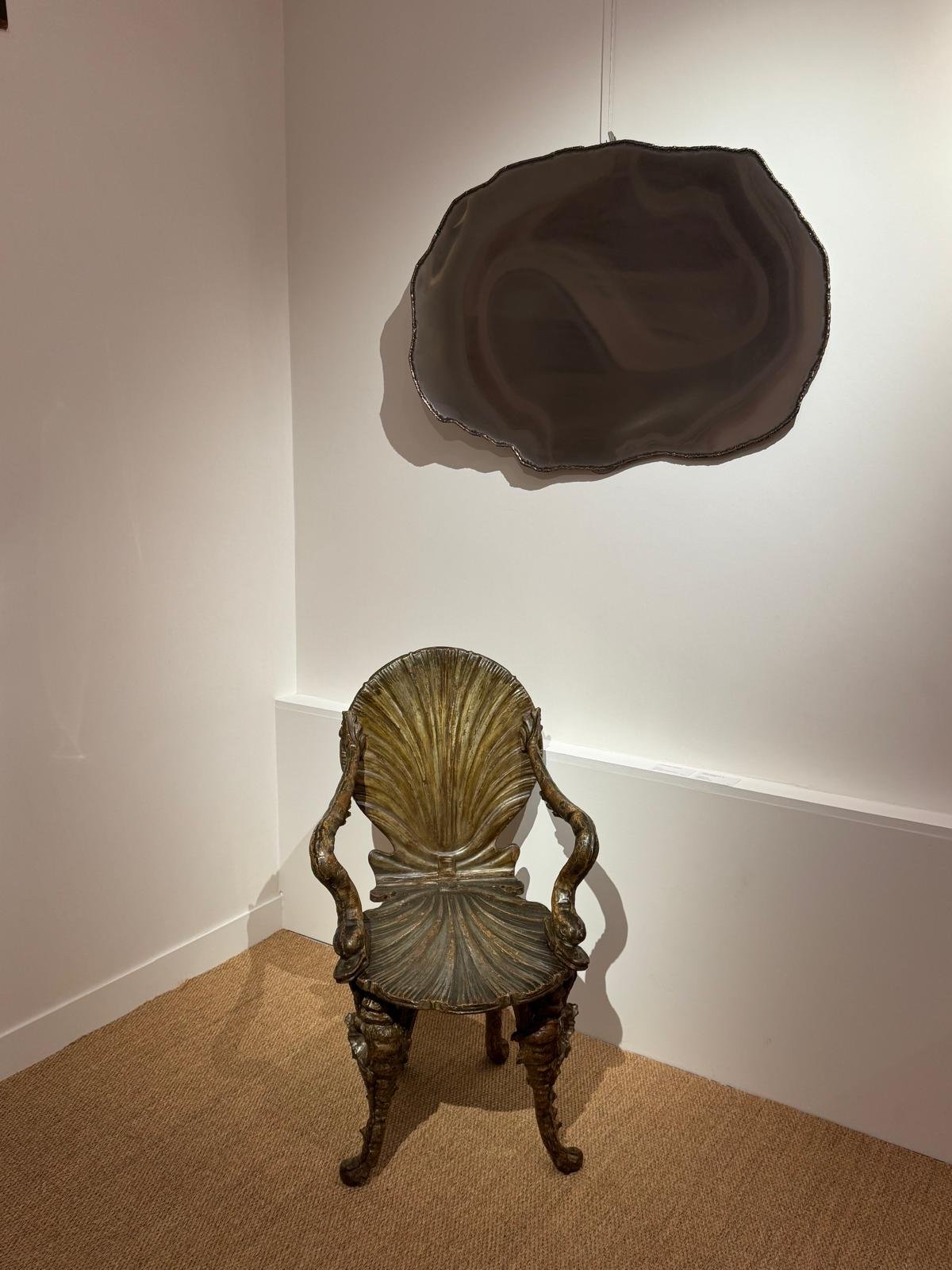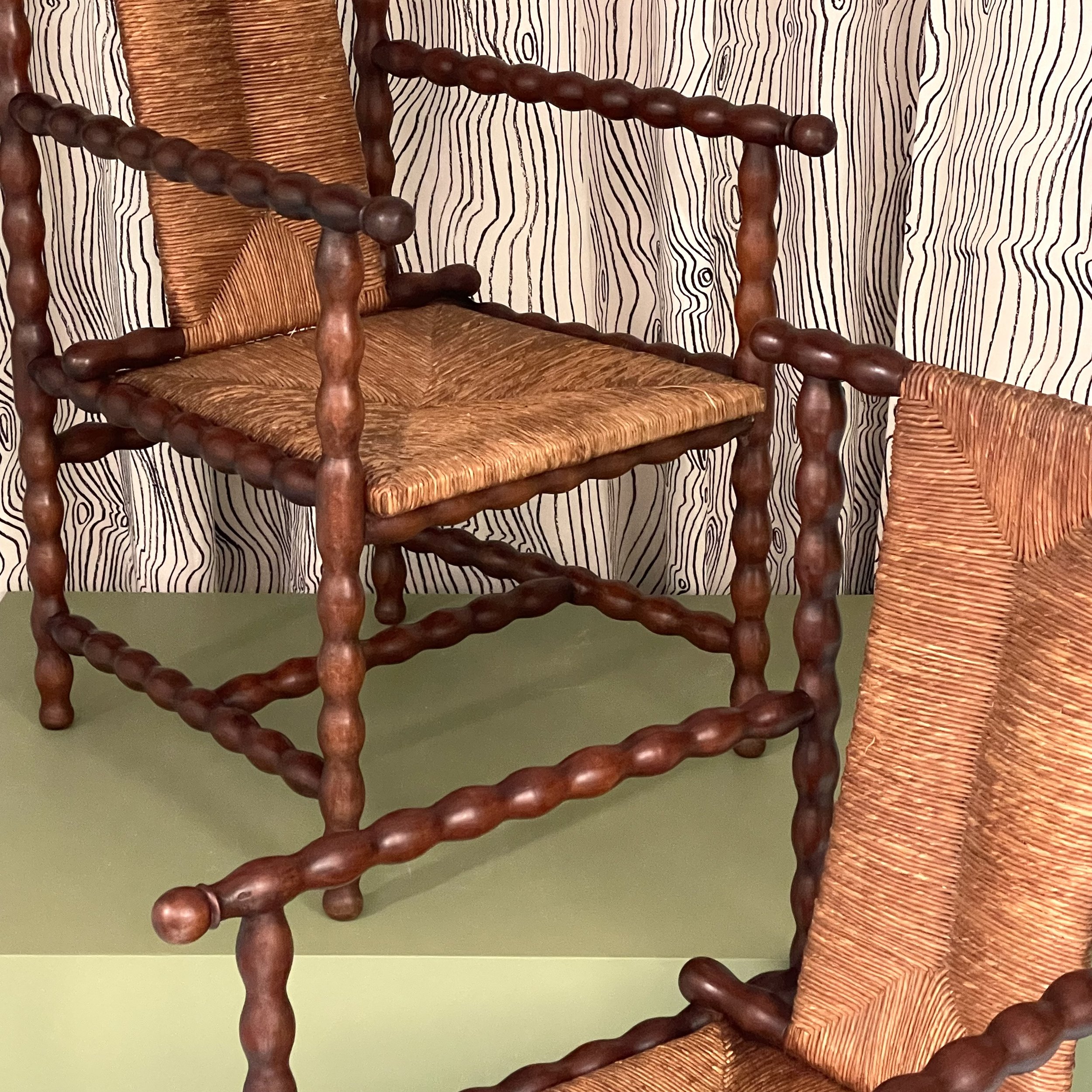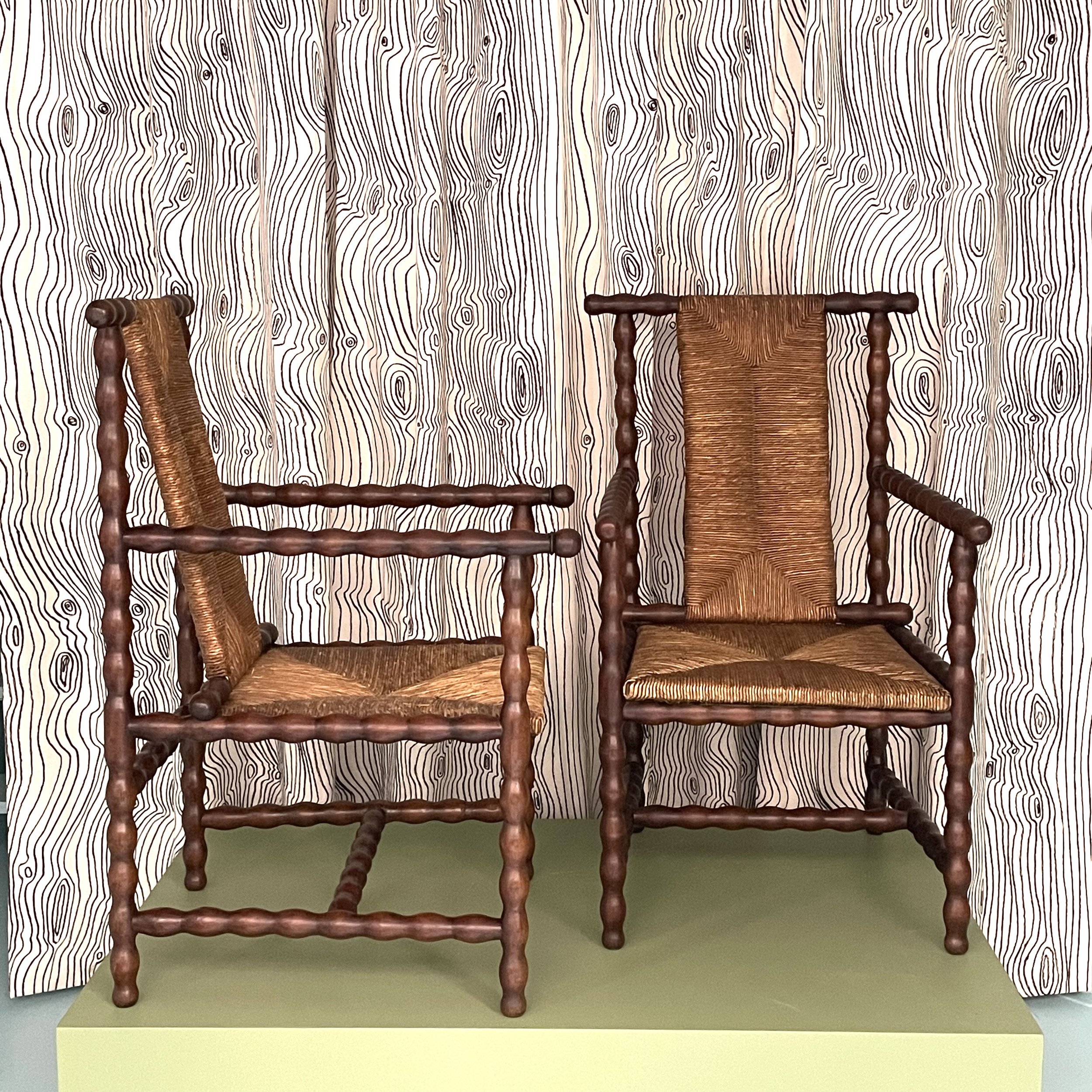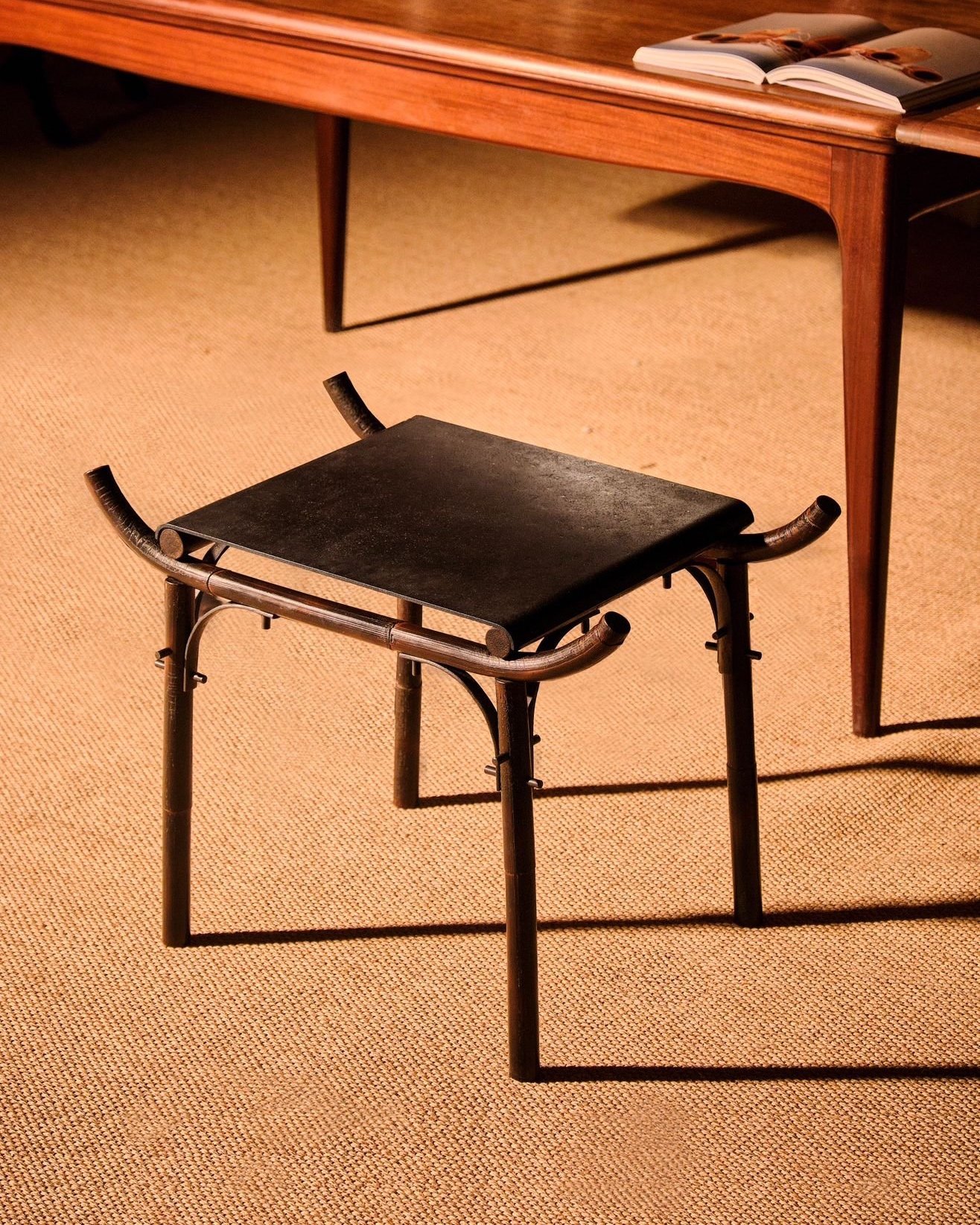Sculpture-habitacle de forme libre, Art populaire
Sculpture-habitacle de forme libre, Art populaire
Sculpture- habitacle monoxyle de forme libre à motifs anthropomorphes
Art populaire, Allemagne
Circa 1930
Marqué au dos EN
H 36 x L 20 x P 43 cm
Très bon état général
Free-form monoxyl sculpture with anthropomorphic angle figures
Folk Art, Germany
Circa 1930
Marked on the back NE
H 36 x W 20 x D 43 cm
Very good general condition
Par sa forme aux arêtes adoucies et ses représentation de visages dans les angles, cette sculpture s’apparente à de la sculpture organique comptable à celle d’Alexandre Noll actif en France dans les années 20 mais aussi à l’école de Dornach qui est intimement liée à l’anthropomorphisme, école de pensée fondée par Rudolf Steiner en Allemagne dans les années 10. De manière générale, tout au long du XXème siècle, des expérimentations isolées liées à la recherche de formes pures mais naturelles ont permis l’apparition d’un style que l’on pourrait qualifier d’organique. Ainsi, Valentine Schlegel intervient dans l’habitat à travers la construction de cheminées alors qu’elle a commencé par fabriquer des vases. De même Jacques Couelle ou Antti Lovag mais surtout , André Bloc qui réalise plusieurs Sculptures habitacles qu’il expérimente aussi sous forme de « pavillons » dans son jardin de Meudon.
Architecture et sculpture s’y entremêlent dans des imbrications organiques, étagées en plusieurs niveaux et parcourues de trouées, ouvrant l'unité plastique de la forme à une expérience physique et spatio-temporelle, à l’instar de la Endless House de Frederick Kiesler ou des Demeures d’Etienne-Martin. Si elles peuvent évoquer des formes troglodytes ou une architecture primitive, les Sculptures habitacles sont avant tout une expérimentation plastique de l’espace qui rédéfinit la notion d’habitat.
By its shape with softened edges and its representation of faces in the corners, this sculpture is similar to organic sculpture accounting to that of Alexandre Noll active in France in the 20s but also to the school of Dornach which is intimately linked to anthropomorphism, school of thought founded by Rudolf Steiner in Germany in the 10s. Generally speaking, throughout the 20th century, isolated experiments linked to the search for pure but natural forms allowed the emergence of a style that could be described as organic. Thus, Valentine Schlegel intervenes in the habitat through the construction of chimneys whereas she began by making vases. In the same way Jacques Couelle or Antti Lovag but especially, André Bloc, who carries out several Sculptures cocoon that he also experiments in the form of "pavilions" in his garden of Meudon.
Architecture and sculpture intermingle there in organic imbrications, layered in several levels and crossed by holes, opening the plastic unity of the form to a physical and spatio-temporal experience, like the Endless House of Frederick Kiesler or the Demeures of Etienne-Martin. If they can evoke troglodyte forms or primitive architecture, the Sculptures habitacles are above all a plastic experimentation of space that redefines the notion of habitat.
Les sassi de Matera, habitat troglodytique, Italie
Casa Terracotta, Octavio Mendoza, Colombie




















